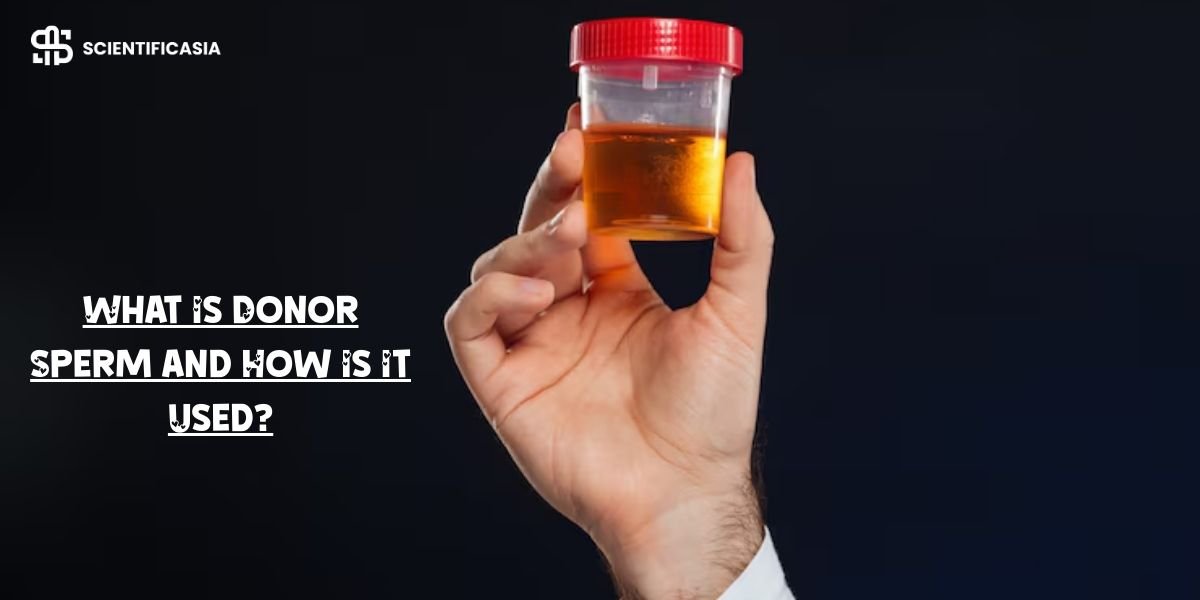As modern reproductive technology continues to evolve, more individuals and couples are turning to alternative paths to parenthood. One widely used option is donor sperm, a reproductive resource that helps people overcome fertility challenges or create families in non-traditional ways. Whether you’re considering this option due to infertility, being a single parent by choice, or part of an LGBTQ+ relationship, understanding what donor sperm is and how it’s used is essential for making informed decisions.
What Is Donor Sperm?
Donor sperm is a type of sperm that is associated with a man, also called the donor, who provides it to help a couple or a single person with their efforts to conceive a child. The donor is not the child’s intended parent and, in most cases, depending on the arrangement of the law, he has no parental rights or responsibilities with the baby born after the donation. Sperm donors generally make their contributions in a medical institution called a sperm bank, which is a place where they collect samples that are screened for infectious diseases and frozen for storage.
They are to be used at a later time. Also, in some situations, the donor may be a friend or family member who is known to the recipient. However, most of the time, the donor is anonymous or is “open-ID” which means the child can reach out to the donor when they become adults. The use of donor sperm has become a widely accepted practice in assisted reproductive technology and plays a central role in making parenthood accessible to a broader range of people.
How Donor Sperm Is Used
There are several common methods by which donor sperm is used to achieve pregnancy, depending on the medical needs and personal preferences of the recipient. Intrauterine insemination (IUI) constitutes the main technique that is normally the one to be used to place (thawed) donor sperm directly into a woman’s uterus during ovulation. This method is minimally invasive and frequently employed in cases of mild infertility, single-parent households, or in LGBTQ+ family planning. Making IUI the method that is used is the one that increases the fertilization chances since the sperm cells are the ones that reach their target egg before the correct time, doing it.
A choice other than that is in vitro fertilization (IVF), wherein donor sperm is employed to fertilize an egg in the laboratory first and then transfer the resulting embryo to the uterus. This method is generally applied when a couple battles severe infertility issues or when both donated sperm and fertilized eggs are obligatory. It is a process that can be controlled more effectively and can also provide embryo genetic tests before implantation.
In some instances, intracervical insemination (ICI), which is a simpler process involving donor sperm being introduced near the cervix, is used. Though it is not generally practiced in health institutions, it can also be an option that can be used at home under the right guidance and conditions.
Who Are the People That Use Donor Sperm?
The application of donor sperm is not just for single people and single-parent families, but it also benefits people and families of all types. Heterosexual couples may seek out sperm donors if the male partner experiences infertility due to the low amount of sperm, poor motility, or medical conditions such as cancer. Women who choose to have and raise their kids on their own achieve their ambition normally through the use of donor sperm.
Moreover, lesbian couples and other members of the LGBTQ+ community embrace donor sperm to strengthen their fertilization process, typically blending it with IUI or IVF for procreation. In some circumstances, a heterosexual couple may even get sperm from a familiar male friend, giving birth to a unique family relationship, yet still relying on assisted reproductive methods.
Legal and Ethical Considerations
Donor sperm is connected to various legal and ethical issues. Plenty of countries have established laws to provide protection to the rights of both recipients and donors, keeping donors from being financially or legally responsible for the child. The legal state of the donor agreement is the case that should be well understood in cases where a known donor is being used or also when the procedure is being done outside a licensed fertility clinic.
Ethical considerations like anonymity, children’s right to know, and the number of families that can be formed from a single donor are some of the factors that lead to people approaching donor sperm differently. A good number of parents these days are endorsing open-ID donors, thereby offering their kids the choice of knowing their real biological parents when they grow older.
Conclusion
Donor sperm is the gateway to parenthood for many who might run into long-standing problems with conceiving. A person needs to seek an education on how donor sperm works before making an informed decision. Whether you are a woman exploring an option for no-fault medical reasons, personal reasons, or building a family through the use of donor sperm, the method is practical and has the potential to change a woman’s life. A paraphrase tool such as Rephrasy can help you rewrite any form of text, including letters and essays.












